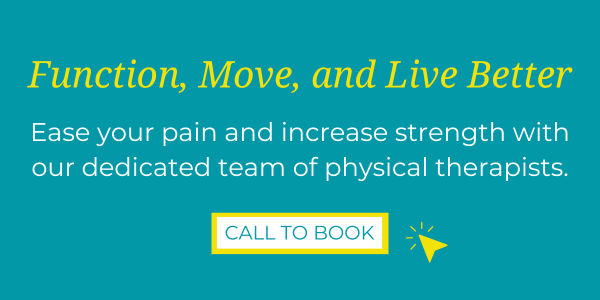What is the Difference Between Physical Therapy and Occupational Therapy?
You’ve been sidelined by a recent injury or perhaps you’re grappling with a nagging pain that just won’t quit. Suddenly, you find it difficult to perform daily tasks like tying your shoes or climbing stairs. You know you need professional help to get back on track. This is where the question arises – what is the difference between physical therapy and occupational therapy?
While both professions play a vital role in rehabilitation and improving quality of life, they differ in their approaches and ultimate goals. Understanding these key differences is important to determine which therapy specialty is the right fit for your needs. Sometimes it’s even beneficial to utilize both.
Physical Therapy: Getting You Back in Motion
Let’s start with physical therapy. Physical therapists are movement specialists, often referred to as body mechanics. Their primary focus is to assess, diagnose, and treat movement disorders. Think of physical therapy as the mechanic for your body.
Physical therapists use their extensive knowledge to understand how different parts of your musculoskeletal system work together. They identify areas of weakness or dysfunction, and then work on fixing those specific problems. A physical therapist will design a personalized treatment plan that typically involves:
- Therapeutic exercises to improve strength, flexibility, and range of motion.
- Manual therapy techniques, such as massage, mobilization, and manipulation to alleviate pain and restore joint movement.
- Modalities like ultrasound, electrical stimulation, or heat therapy to reduce pain and inflammation.
For example, if you’ve sprained your ankle playing tennis, a physical therapist would help you regain ankle stability, range of motion, and strength. This would be done through targeted exercises and manual therapy techniques. They’ll teach you how to prevent future injuries. Physical therapy emphasizes restoring your body’s optimal movement and function.
Occupational Therapy: Regaining Independence in Daily Life
Now, where physical therapy primarily focuses on movement, occupational therapy takes a more holistic approach. Occupational therapy focuses on helping people of all ages participate in their desired daily activities or “occupations”.
Occupational therapists (OTs) help people adapt and regain independence. They consider your physical abilities, cognitive skills, and environmental factors when designing personalized treatment plans. Some common interventions used in occupational therapy are:
- Adaptive strategies and techniques for daily tasks: Imagine learning new ways to dress yourself after a shoulder injury. An occupational therapist might introduce you to assistive devices and alternative techniques.
- Assistive technology and adaptive equipment: Occupational therapists can recommend and train you on specialized tools. These tools range from modified utensils for eating to wheelchairs and voice-activated software to help you better navigate daily life.
- Environmental modifications: An occupational therapist will look at ways to make your home or workplace more accessible. This could include installing grab bars in the bathroom or recommending ergonomic furniture to reduce strain.
- Cognitive retraining: This is especially helpful for people who have experienced brain injuries or strokes, focusing on improving memory, attention, problem-solving, and other cognitive functions essential for daily living. Occupational therapists work on cognitive exercises, strategies, and compensatory techniques to help retrain these skills.
Here is an example of how occupational therapy and physical therapy could be incorporated into treatment:
Let’s say a painter experiences a stroke that affects their right side. A physical therapist would work on exercises and techniques to help them regain strength and mobility in their right arm and leg. This is essential for walking, maintaining balance, and carrying their tools.
Occupational therapy would focus on improving the fine motor skills in their hand, allowing them to eventually grip a paintbrush. OTs would also help them relearn painting techniques or adapt their approach, allowing them to return to their profession.
Key Differences Between Physical Therapy and Occupational Therapy
While both therapy specialties are critical for regaining functionality and enhancing well-being, physical therapy and occupational therapy address different aspects of recovery. To illustrate the distinct focuses of these two fields, consider the table below:
| Feature | Physical Therapy (PT) | Occupational Therapy (OT) |
|---|---|---|
| Primary Goal | Restoring physical function, movement, and mobility. | Improving independence and participation in daily activities. |
| Focus | Strength, flexibility, balance, coordination, pain management. | Fine motor skills, adaptive strategies, assistive technology, cognitive retraining, environmental modifications. |
| Typical Patients | Individuals with musculoskeletal injuries, neurological conditions, cardiopulmonary disorders, or those recovering from surgery. | People with physical disabilities, cognitive impairments, developmental disabilities, or chronic illnesses seeking to optimize their independence and quality of life. |
Overlap and Collaboration
Although distinct in their approach, physical and occupational therapy often intersect and complement each other. This is especially true in cases of complex injuries or chronic conditions. It is not uncommon for individuals to benefit from both therapies concurrently, as the skills learned in one area can directly impact the progress made in the other.
FAQs about what is the difference between physical therapy and occupational therapy
Which is better, occupational therapy or physical therapy?
Deciding which is “better,” occupational therapy or physical therapy, depends entirely on individual needs and goals. If your focus is regaining strength, mobility, and managing pain, physical therapy might be more suitable.
However, if your goal is to enhance independence in daily activities and adapt to specific challenges, then occupational therapy might be more beneficial. It’s often most effective to combine the two approaches.
What is an example of occupational therapy?
Imagine an individual who recently had a stroke and is having difficulty getting dressed. An occupational therapist would help them relearn dressing techniques, recommend adaptive clothing or assistive devices like button hooks, and suggest home modifications like installing grab bars for support.
What is the point of occupational therapy?
The main goal of occupational therapy is to empower people to live their lives to the fullest by participating in meaningful activities (occupations) despite illness, injury, or disability.
What is a major difference between an occupational therapist and a physical therapist?
While there are many explanations, a major difference is their primary focus. Physical therapists center on improving mobility, strength, and reducing pain. Occupational therapists, in contrast, emphasize enhancing independence in all aspects of daily life, adapting environments, and maximizing functional ability.
Conclusion
What is the difference between physical therapy and occupational therapy? Ultimately, deciding on the right therapeutic path requires a thoughtful evaluation of your needs, goals, and the expertise of these healthcare professionals.
Whether you’re aiming to improve your physical mobility, enhance your daily functionality, or both, understanding what is the difference between physical therapy and occupational therapy helps you make the right choice. The right choice is one that aligns best with your personal journey toward recovery and enhanced well-being. Don’t hesitate to reach out to your healthcare provider. They will work with you to make the best choice to put you on the road to a healthier and more fulfilling life.

